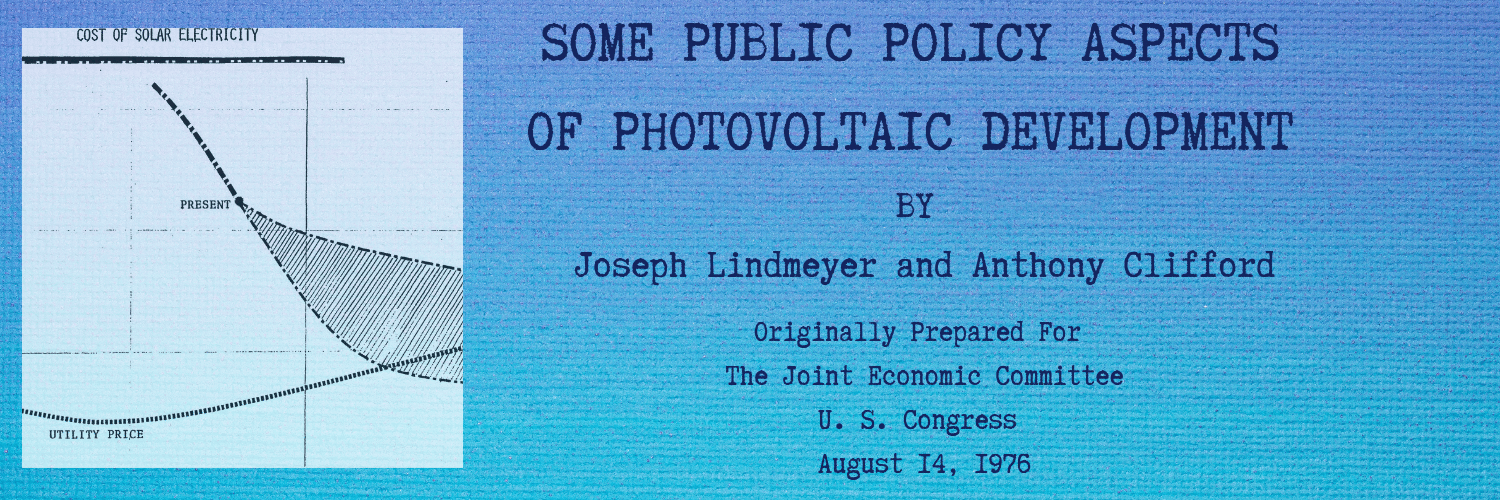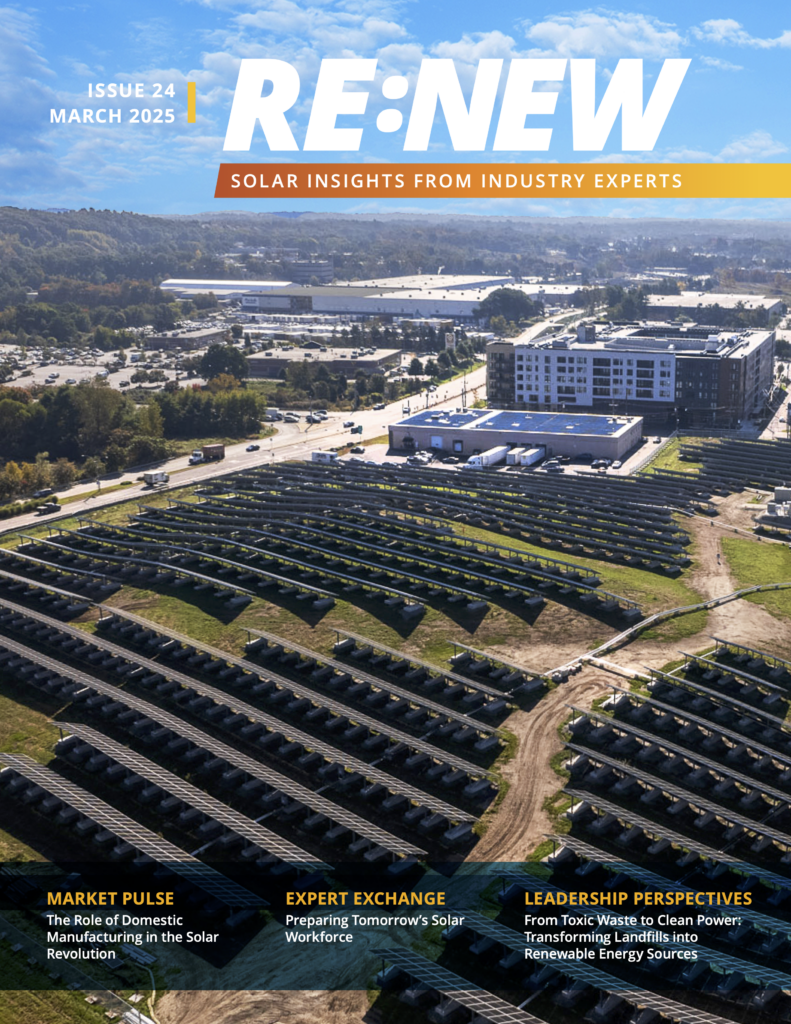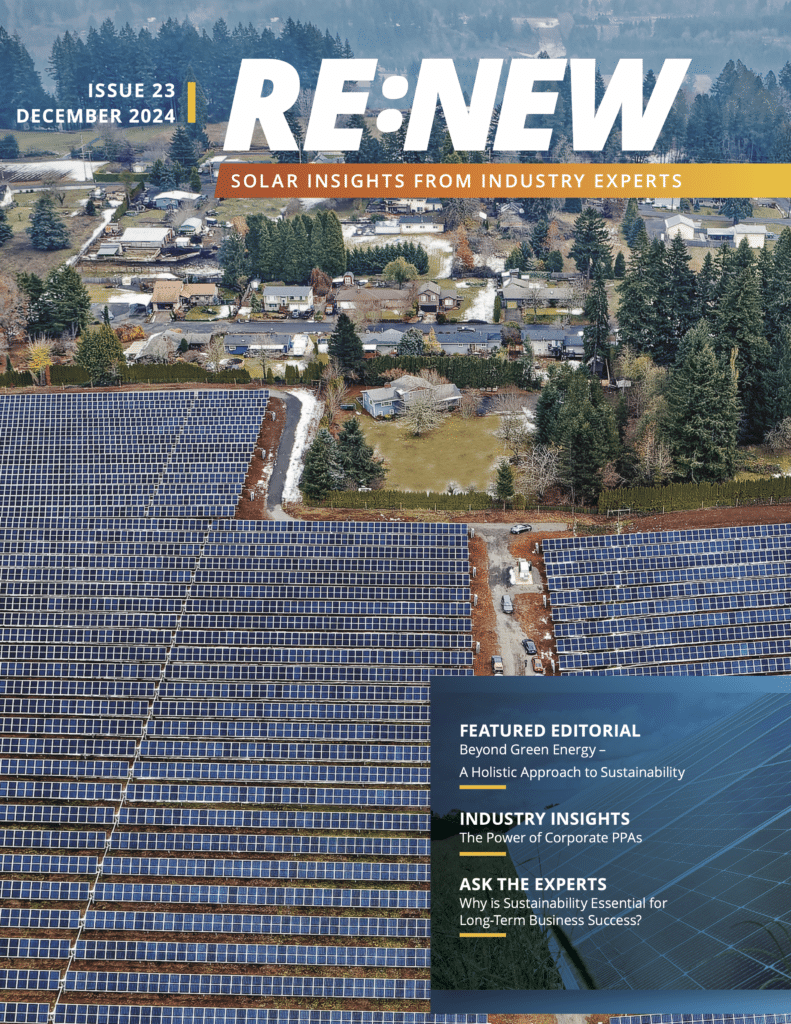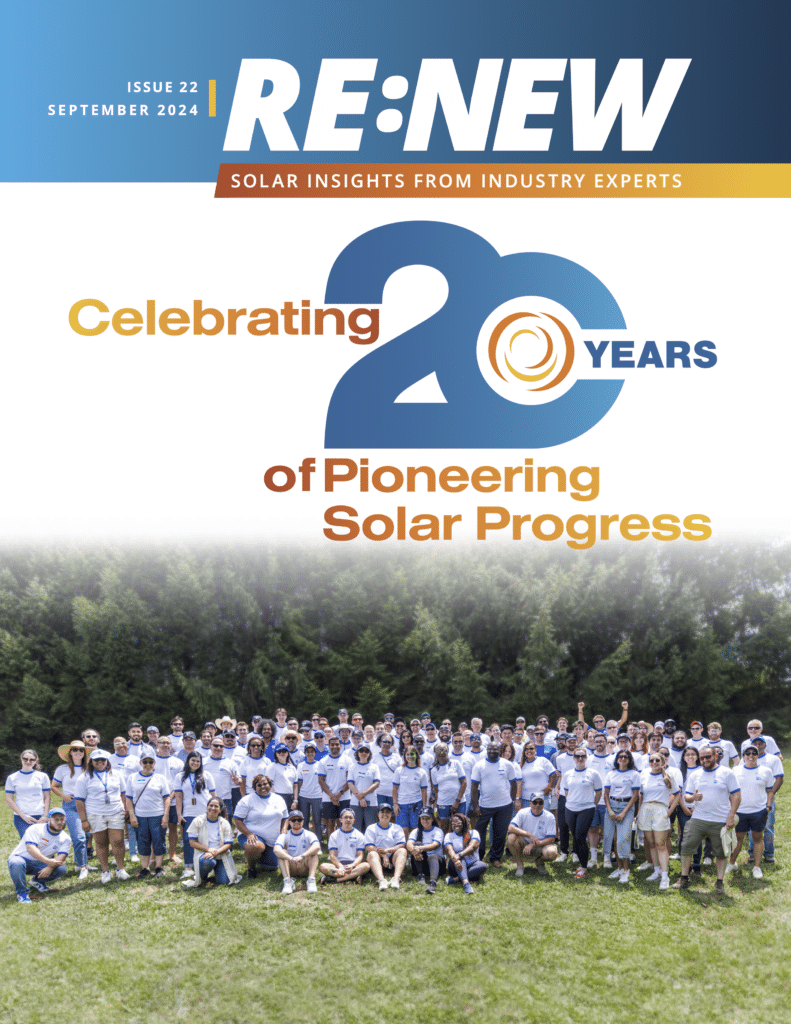I recently rediscovered a transcript of testimony I gave (along with my then-colleague Dr. Joseph Lindmayer) in 1976 to the Joint Economic Committee 0f the U.S. Congress. The title of my testimony, and you can probably guess the subject, was “Some Public Policy Aspects of Photovoltaic (PV) Development.”
See? Even at that young age, I was a solar policy geek.
As I perused the testimony, it was really fascinating to see what Joseph and I got right and what we got wrong. So, I decided to share with all of you some of the predictions we made about the way we thought the solar industry was headed—and how our predictions hold up under the weight of real-life historical context.
Then: The technological feasibility of terrestrial solar cells has been proven.
Now: Obviously, we were right on this one. Not only was it proven then, three years after the first U.S. factory started producing modules in 1973, but the fact that the industry now employs more people than the coal and oil extraction industries combined is a testament to the fact that solar modules just work—and they’re no longer a niche market.
Then: Solar cells will become cost-competitive with conventional sources of power.
Now: As an industry, we find ourselves in the position where solar power is cost competitive with fossil fuels in an ever-increasing number of states and regions of the country. We nailed this one as clearly as any of our predictions.
Where we got it wrong was on the timeline. My younger self was much more optimistic than my older self would become, and Joseph and I presumed we would progress to cost competitiveness by 1986, a mere 10 years after our testimony. We were off by about 30 years—but the essential notion that solar would be cost competitive with fossil fuels is now an accepted part of solar’s story, and it just keeps getting truer every day.
Some of our misguided optimism on the speed of PV development was based on the naïve belief that the federal government would lead the massive development and PV demonstration program necessary to meet the original 1986 goal. After all, NASA got us to the moon in fewer than eight years in the 1960s. In fact, the Department of Energy (DOE) started such a program in 1975. At the time of our testimony, NASA’s Jet Propulsion Laboratory (JPL) was just getting started on DOE’s “Low-Cost Silicon Solar Array Program” whose goal was to make photovoltaics commercially feasible by the mid-1980s. Unfortunately, while the program was on target, it was cancelled in 1981 when Ronald Reagan became president. More on that in a future blog.
Then: A wealth of potentially cost-competitive solar cell technologies are available for development.
Now: The jury is still out on this one. On the one hand, there have been significant improvements in the efficiency of solar modules. Obviously, that’s how we’ve gotten to be cost-competitive with traditional fossil fuels. But the basic technology continues to be—primarily—silicon-cell modules. That’s essentially an evolution of the same technology we were examining back in 1976.
Some thin-film PV technologies appeared to be ready to take off within the past decade, but really only one has reached mass production (thanks, First Solar), and it’s primarily focused on utility-scale projects where the cost of the modules are minor compared to the overall cost of the projects. Thin-film PV systems can be attractive in desert areas (lots of sun and cheap land), but the technology is less efficient than silicon. It has not reached its full potential in the United States.
Finally, perovskites are showing great promise as the potential future of solar technology. But we’re still years away from mass production of perovskite cells and their incorporation into usable modules that we can put on rooftops or mount on the ground.
So, for now, silicon modules are it. I don’t immediately recall what we foresaw for silicon in 1976, but at least with the benefit of hindsight, it looks like most of the new technologies we thought we saw turned out to be fool’s gold. Silicon was the best available technology in 1976 and, in my opinion, it still is.
It was a real “Back to the Future” moment for me when I found this testimony, and I haven’t even gotten off the first page yet. I’ll keep reviewing the document and will bring you more predictions vs. reality as I find them.
More Recent Blog Posts
Building an Enduring Solar Legacy in America’s Next Energy Era
June 9, 2025
Rick Berube · 2 min read
Beyond Panels: How The Catholic University of America Cultivates Holistic Sustainability Through Solar
May 13, 2025
John Finnerty · 4 min read
Celebrating 20 Years of Transforming the Energy Landscape
December 12, 2024
Scott Wiater · 5 min read
Honoring Our Past To Build Our Future
November 18, 2024
Scott Wiater · < 1 min read
Most Popular Blog Posts
How To Create A Complete Commercial PV Design Package
CJ Colavito · 3 min read
Navigating Solar Policy in Uncertain Times: Standard Solar’s October Policy Brief
Trevor Laughlin · 3 min read
Neville Williams: Standard Solar’s Standard Bearer
Tony Clifford · 3 min read
Standard Solar and Catholic University of America implementing DC’s largest urban community solar array
John Finnerty · 3 min read





Share